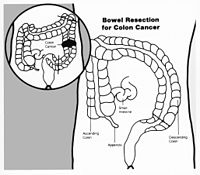
Photo from wikipedia
Purpose Gamma-glutamyltransferase (GGT) and alkaline phosphatase (ALP) were involved in the development and progression of cancers. This study aimed to evaluate the prognostic value of a preoperative GGT:ALP ratio (GAR)… Click to show full abstract
Purpose Gamma-glutamyltransferase (GGT) and alkaline phosphatase (ALP) were involved in the development and progression of cancers. This study aimed to evaluate the prognostic value of a preoperative GGT:ALP ratio (GAR) in hepatocellular carcinoma (HCC) patients with curative liver resection. Patients and Methods A total of 380 HCC patients underwent curative liver resection before December 2017 and from January to December 2018 were included and stratified into training set and validation set, respectively. Prediction accuracy was evaluated by the area under the receiver operating characteristic curve (AUC). Factors determined to be significant for overall survival (OS) and tumor-free survival (TFS) by using Cox regression analysis. The Kaplan–Meier method and Log rank test were utilized for survival analysis. Results The AUC of GAR was 0.70 (P < 0.001). An optimal cut-off value of 0.91 yielded a sensitivity of 78.1% and a specificity of 60.4% for GAR (P < 0.001), which stratified the HCC patients into high-risk (>0.91) and low-risk (≤ 0.91) groups. Time-dependent ROC revealed that the AUCs for 1-, 3-, and 5-year OS predictions for GAR were 0.60, 0.69 and 0.62, respectively. In addition, GAR was identified as an independent risk factor for OS and TFS both in training and validation cohort by univariate and multivariate Cox regression analysis, as well as a good prognostic indicator for patients with Barcelona Clinic Liver Cancer stage C or without vascular invasion. Notably, the AUC of the GAR for survival was better than several potential prognostic indices (P < 0.05). Conclusion We identified the GAR as a prognostic indicator in two independent cohorts of HCC patients with curative liver resection. The patients with decreased GAR score were significantly associated with better OS and TFS.
Journal Title: Cancer Management and Research
Year Published: 2020
Link to full text (if available)
Share on Social Media: Sign Up to like & get
recommendations!